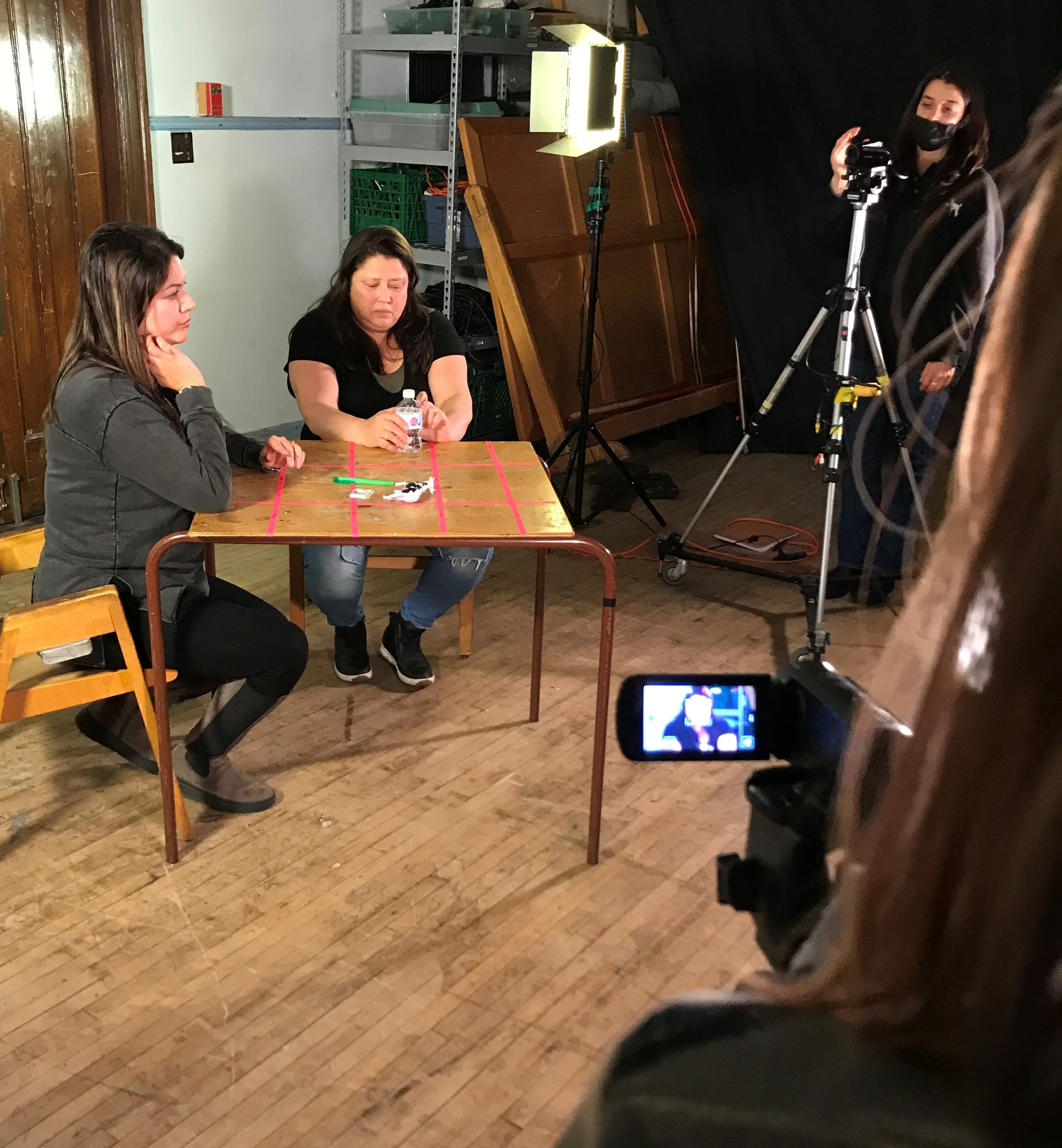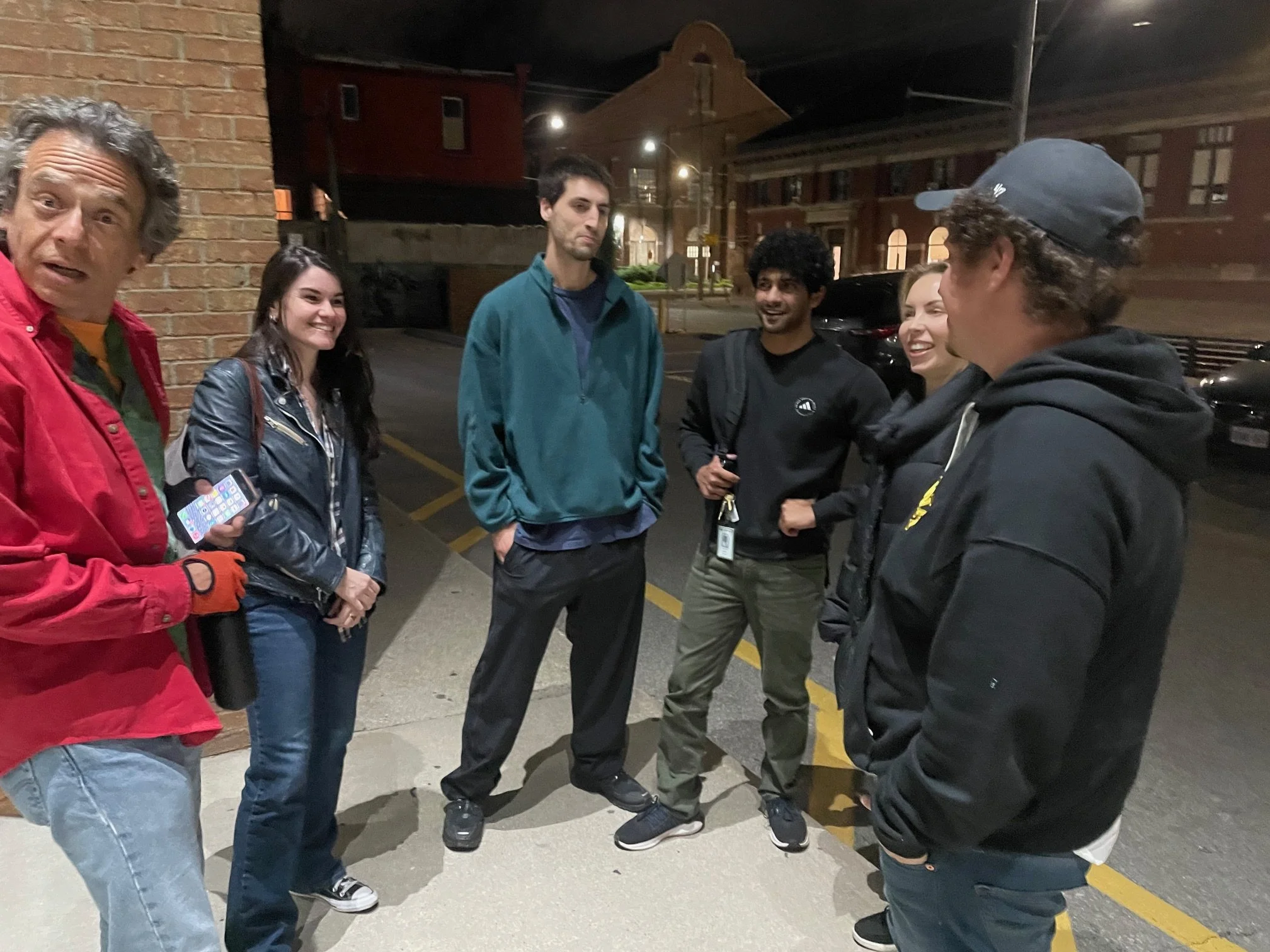The Porter a CBC Television Show
/The Porter is a CBC and BET+ original television series now airing on CBC and Gem consisting of 8 one-hour episodes.
Produced by Winnipeg-based Inferno Pictures and Sienna Films the show is described by CBC as, ‘…the largest Black-led production in the history of Canadian Television.’
BET+, an American production company, says they are, ‘…the preeminent streaming service for the Black audience, with exclusive originals and thousands of TV episodes and movies from the best Black creators.’
The CBC website describes The Porter: ‘For the American and Canadian men working as railway porters, it’s a fight for equity and dignity. For the women in their lives, facing sexism and colorism, it’s a movement to claim their independence and identity.’
John Doyle, television critic for the Globe and Mail, reviews the series writing, ‘This is less a history lesson, than it is a sizzling, sexy drama about people you want to root for and follow.’
The series, originated and created by Arnold Pinnock and Bruce Ramsay, ‘… highlights the moment when railway workers from both Canada and the United States joined together to give birth to the world’s first Black union.’ explains the CBC.
The website continues, ‘They’re young, gifted and Black, in an era that boasts anything is possible, and if change isn’t coming for them, they will come for it. By any means necessary.’
The series is set in the St. Antoine district of Montreal around the 1920’s. Three main stories juxtapose themselves showing different paths workers pursue to live their lives.
The three stories are: the organizing of the first Black railway workers union, the activities of the UNIA (Universal Negro Improvement Association), and the illegal sale of liquor, prostitution and gambling. The principal characters follow the plots in each of the of those story lines.
The UNIA was founded in 1914 in Jamaica by Marcus Garvey who led the organization until he was imprisoned in 1923. It’s aims were for racial pride, economic self-sufficiency, and the formation of an independent Black nation in Africa.
We see the UNIA charity nurses in starched uniforms going into the community raising funds for the association. Scenes show the contradictions between the women as to the most useful role the association can play to meet the needs of the people.
In April 1917, Black porters based in Winnipeg — John A. Robinson, J.W. Barber, B.F. Jones and P. White — formed the Order of Sleeping Car Porters (OSCP), the first black railway union in North America.
The TV series dramatizes the formation of the union.
The first episode closes with a meeting of workers being addressed by A. Philip Randolph, who in 1925 organized the Brotherhood of Sleeping Car Porters in the U.S., saying, “The railroad owners will exploit a white man as readily as they will exploit a black man; they will exploit women as readily as they will exploit men; unions are not based upon race lines, but upon class lines.”
Police end the meeting shouting, “Hands up Bolsheviks!”.
One scene depicts an undermanned crew of workers trying to lower an ice block from the top of a box car. A worker slips, falls off the top of the car and is killed. The railway presents his widow with a bill for the uniform he died in.
The Winnipeg General Strike is one of Canada’s most famous labour battles. At 11:00 am on May 15, 1919, workers walked off the job and marched into the streets of Winnipeg, leading to one of the biggest labour actions Canada has ever seen. 30 were injured and two killed by police.
The War Measures Act under which internment took place was maintained well after the First World War and was used to break up the strikes. For example, the United Mine Workers of Alberta who organized the coal miners in the Rockies.
Participants in the Winnipeg General Strike of 1919 were interned as ‘enemy aliens’ and the government changed the Immigration Act to permit deportation of British-born leaders of the strike. Under the War Measures Act, the foreign language press was censored, but exceptions were made for those papers which supported government policy.
In 1919 labour struggles were taking place all across Canada with more than 149,000 workers in more than 400 strikes and 3.4 million workdays lost.
Montreal also had its militancy and worker actions during this time. At the Montreal Light, Heat and Power Company, Vickers Shipyard, Dominion Textiles and the Waterworks Department - workers went on strike.
International events at this time included the Great October Revolution in Russia when the Bolsheviks overthrew Czar Nicholas II in 1917 and the Irish uprising on April 24, 1916 to free Ireland from British rule.
R.T. Thorne, an executive producer and a director of the series told Debra Yeo of the Toronto Star, “It was important to go beyond the history to our multitude of cultures that make up the Black experience in North America … to hear the accents and to almost taste the food and hear the music …”
He says, “We didn’t want it to just be a historical documentary. We want to give you something spicy as well. We want you to have fun while you’re watching the show.”
We see scenes of White workers mistreating the Black porters. A porter tells the White unionized train workers they want to join their union. The white workers swear at them and start beating up the porters.
In another scene a Black organizer asks the White railway union leader for assistance in organizing the porters. The leader offers no support or guidance other than saying, “Take your case to the Union Congress.”
Later we see the Black union organizer getting the porters to sign up for the union and pay their dues. He goes to Ottawa to present their case for a porter’s union in front of the Union Congress only to be told, “We don’t wish to give you or your men any false hope, but the answer is no - plain and simple. The Negro is an invisible entity on the railroad making labour a White man’s fight.”
The owner of the railroad finds out who signed up for the union and fires them all.
Later we see White railroad workers lined up on strike (representing the 1919 strikes in Montreal) and the black porters one by one join the picket line beside them.
A Black worker says, “Us refusing to cross their picket line is our right as workers.”
In a scene between the owner of the railroad and the leader of the rail union discussing the strike movement the dialogue goes like this:
Rail boss: “Trust me this Communist invasion masking itself as a legitimate labour movement is already in the process of being dismantled. Mounties are rounding up Reds as we speak. You wouldn’t want a repeat of Bloody Saturday, would you? You lost a few of your kind in that debacle as I recall.”
Union leader: “You pull that red scare bullshit they tried in Winnipeg and it’ll be your blood running in the streets, not ours.”
The Canadian Brotherhood of Railway Employees and Other Transport Workers (CBRE) was an industrial union of railway workers in Canada. It was formed on October 12, 1908 in Moncton, New Brunswick and led by Aaron Mosher.
In one of the last episodes a Black union organizer speaking to a meeting of the CBRE to get them to change the bylaws to allow black workers in the union says, “The porters are not your enemy, the company is. With our power as workers we can fight them together and that is a fight that labour can win.”
Within two years after formation, the OSCP – the porter’s union - had negotiated contracts for sleeping car porters on the Canadian Northern Railway and the Grand Trunk Railway. In 1919, the OSCP joined the CBRE which agreed to remove the ‘Whites-only’ clause from its constitution.
Other aspects of life in Little Burgundy are portrayed showing a woman singing and dancing in a jazz club trying to get to New York to sing on Broadway; men involved in gambling, racetrack betting, selling illegal liquor – all enduring hardships, arrests and uncertainty; the madame of a brothel overcome by drug addiction desperately hanging on to her life.
Workers lives and struggles have been represented in many films. Three famous scenes come to mind.
In Sergei Eisenstein’s 1927 Soviet film Battleship Potemkin the famous Odessa Steps sequence depicts the massacre of the citizens by the Cossacks. The citizenry of Odessa gather at the top of the Odessa steps to show their support to the sailors on the Potemkin and cheer on the rebels. Suddenly a detachment of dismounted Cossacks form battle lines at the top of the steps and march toward the crowd of unarmed civilians including women and children, and begin firing and advancing with fixed bayonets driving them down the steps.
Charlie Chaplin’s 1936 film Modern Times shows his famous character The Tramp working on an assembly line, where he suffers greatly due to the stress and pace of the repetitive work. He eventually suffers a nervous breakdown and runs amok, getting stuck within a machine and throwing the factory into chaos. Chaplin’s high cinematic art allows the audience to experience the pathos.
In Vittorio De Sica’s 1948 film The Bicycle Thieves an unemployed worker finally lands a job and is now able to feed his family. The new job requires a bicycle – his family pawns their best linen to buy one - but it gets stolen on his first day of work. Desperately he searches for it all day, can’t find it and finally ends up stealing a bicycle.
‘With a cross-section of Canadian, American and Caribbean culture, this series is one of the most authentic representations of Black identity we’ve seen on North American television.’ writes Kevin Bourne, Editor-in-chief, Shifter a Canadian online Black and urban culture magazine
He continues, ‘The visual aesthetic of this show is something that we’ve never seen before on Canadian television. It’s dark, somber and cinematic which matches the raw and honest look at a somewhat dark yet inspirational aspect of Canadian history most of us never knew about.’
The Porter ends with a quote from Frederick Douglass, the 19th century African American political activist: “If there is no struggle there is no progress.”.








